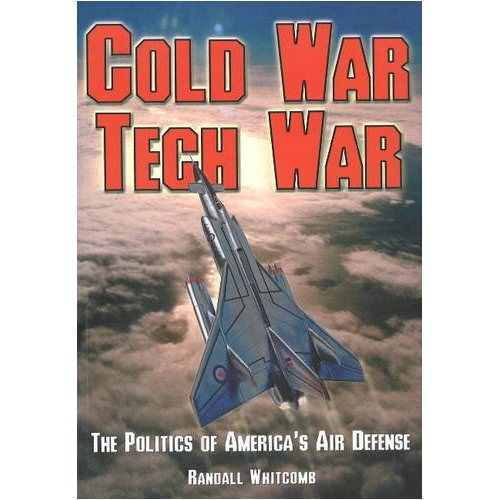[/caption]
When is the best answer not the right answer? Assuredly many historical events epitomize this dilemma. Randall Whitcomb digs into Canada’s Avro Arrow story and delivers up such an event in his book, “Cold War Tech War – The Politics of America’s Air Defense“. In it, he shows how a plane, successfully designed and built for winning tomorrow’s war, ended up not being chosen as the perfect answer.
The Avro Arrow jet fighter resulted from post war collaboration between Canadian and British scientists and engineers. This futuristic fighter, with broad delta wings and an innovative power plant, should have been able to compete favourably in air to air combat. Though design and preproduction builds occurred in the late 1950’s, some people believe that it would have been able to match or better today’s F-22 Raptor. But, the Canadian government abruptly and completely ceased support of the program and demanded that its existence be stricken. Hence, in one day, the Arrow program ended and a company was laid waste.
Given the Arrow program’s abrupt and politically charged ending, much has been written about it. Whitcomb’s book aims to reconsider this event and add new light by looking at ‘the larger geo-political and economic issues’. To do so, the book looks at the company, A.V. Roe Canada Ltd, as the principle character. Providing its history and the actions of some of its employees and products allows the reader to accept the claim that the company was a global leader in the aerospace world. Describing the design of the Avro Jetliner, the Avro Supersonic Transport and the Avro Space Threshold Vehicle shows the reader just how innovative and advanced were the company’s designers. And, with all this, the book also shows what went wrong.
Whitcomb’s claim is that international machinations were to blame. Here, the book bears more resemblance to a John le Carre novel than a work of non-fiction. However, the references and reprinted (declassified secret) documents indicate otherwise. In looking at the broader global picture, the book expands its scope to include the Bilderberg Group, banana republics and the Panama canal. Its main theme is that international conglomerates used their power and influence to ensure a maximum return over the short-term future. Thus with A.V. Roe being a Canadian company and most conglomerates being from the United States, the Arrow was considered expendable and even threatening. Hence it became a victim of its own success, at least according to the book.
Though an intriguing and fascinating book in its own right, the prose has some problems. The root of these is possibly due to the author unfortunately passing away before finishing the manuscript. Perhaps in consequence, there are many short, sometimes disconnected chapters, including some that seem unrelated to the main theme. As well, the depth of detail for the aircraft (e.g. explaining airfoil shapes) don’t relate to the geo-political or economic issues. But, the enthusiasm, knowledge and ability of the author’s writing quickly put such trivialities aside.
So, why would today’s aerospace community be interested in this book? Well, there’s no plan to resurrect the Arrow, so engineers probably aren’t interested. But, international conglomerates remain today. Therefore, any reader who is interested in turning a grandiose dream into reality would benefit from the reality spread throughout this book. Those vast new telescopes on nearly inaccessible mountain tops or spaceships carrying humans to Mars all will rely upon the support of international conglomerates. Thus, as this book readily shows, champions need pick and choose their friends and allies carefully.
Politics makes for vociferous discussions as well as strange bedfellows. Mix in some state of the art technical theory and the recipient may never again be able to differ fact from fiction. In Randall Whitcomb’s book, “Cold War Tech War – The Politics of America’s Air Defense” it becomes only too clear that politics held greater sway than reason. And from it, as shown, the right answer was lost.


The story did indeed make for an excellent film with Dan Akroyd.